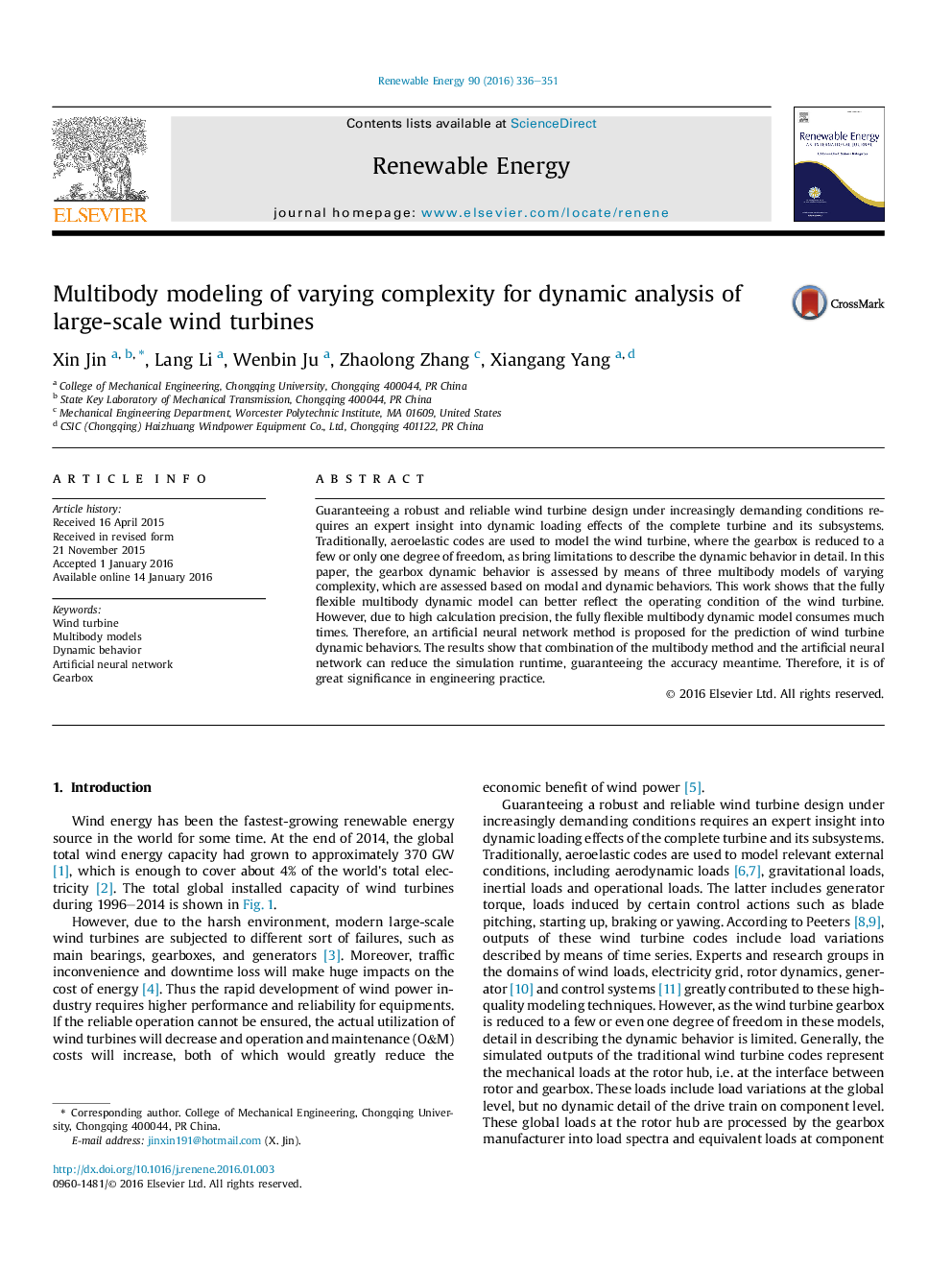| Article ID | Journal | Published Year | Pages | File Type |
|---|---|---|---|---|
| 299836 | Renewable Energy | 2016 | 16 Pages |
•Multi-body techniques of varying complexity are investigated in this paper.•Flexible multi-body dynamic model can better reflect the dynamic behavior.•ANN is proposed for the prediction of wind turbine dynamic behaviors.•Combination of the two technologies can reduce the simulation runtime.•Meantime the accuracy could be guaranteed.
Guaranteeing a robust and reliable wind turbine design under increasingly demanding conditions requires an expert insight into dynamic loading effects of the complete turbine and its subsystems. Traditionally, aeroelastic codes are used to model the wind turbine, where the gearbox is reduced to a few or only one degree of freedom, as bring limitations to describe the dynamic behavior in detail. In this paper, the gearbox dynamic behavior is assessed by means of three multibody models of varying complexity, which are assessed based on modal and dynamic behaviors. This work shows that the fully flexible multibody dynamic model can better reflect the operating condition of the wind turbine. However, due to high calculation precision, the fully flexible multibody dynamic model consumes much times. Therefore, an artificial neural network method is proposed for the prediction of wind turbine dynamic behaviors. The results show that combination of the multibody method and the artificial neural network can reduce the simulation runtime, guaranteeing the accuracy meantime. Therefore, it is of great significance in engineering practice.
